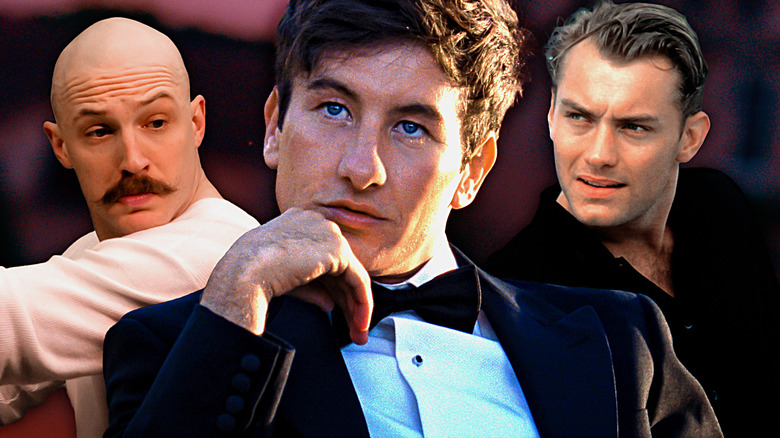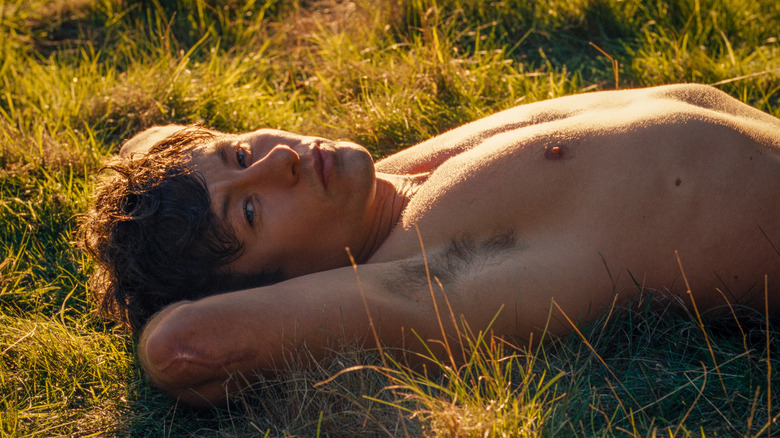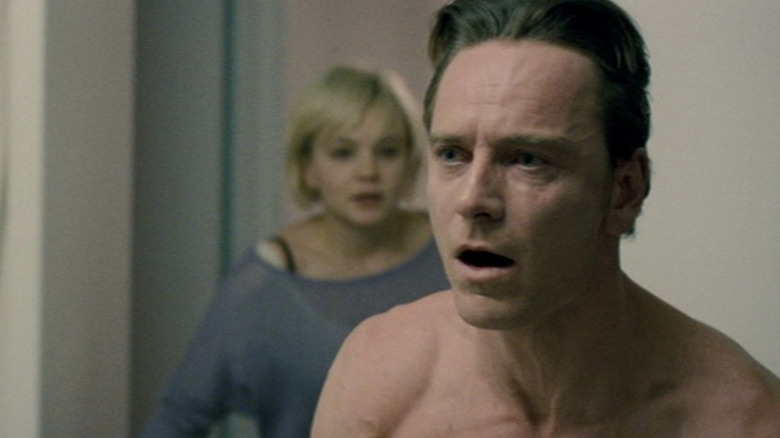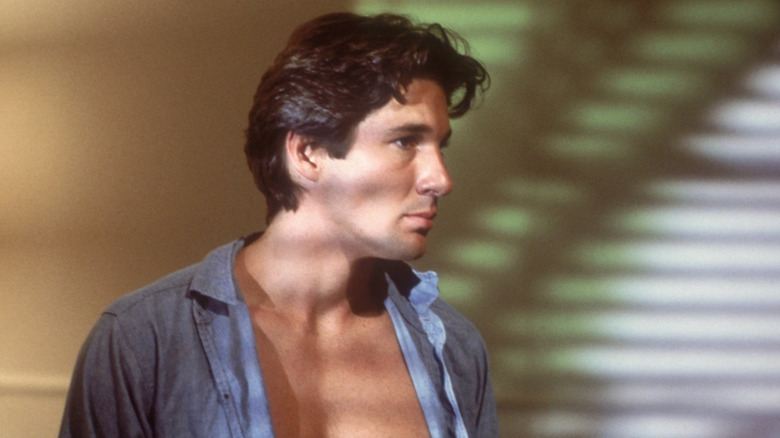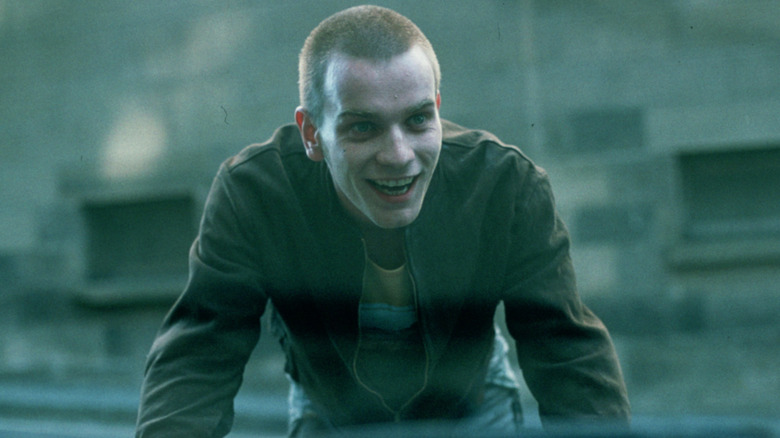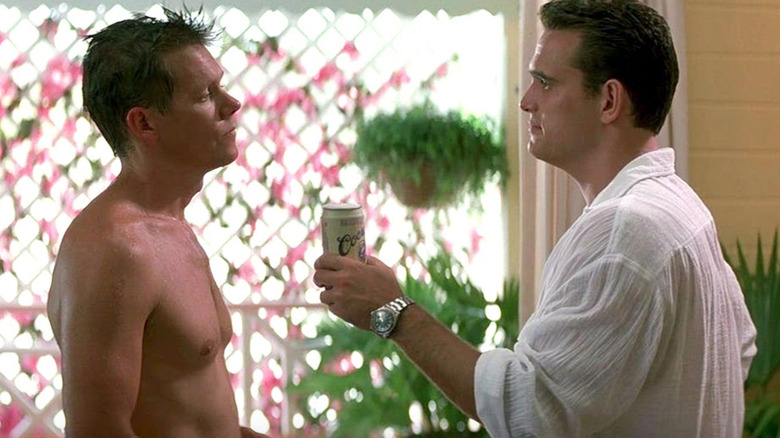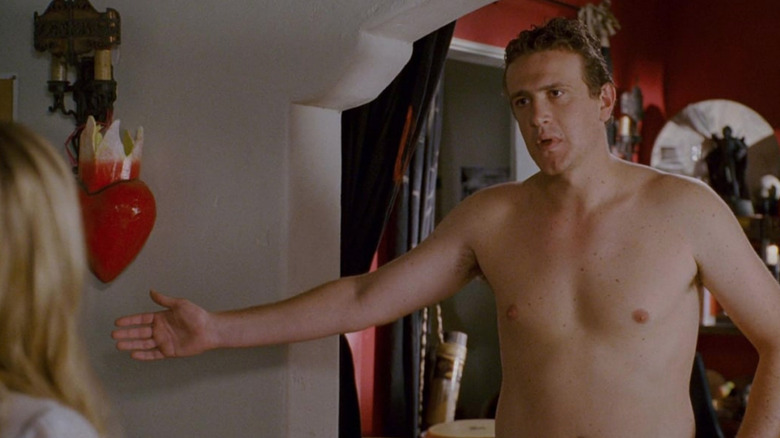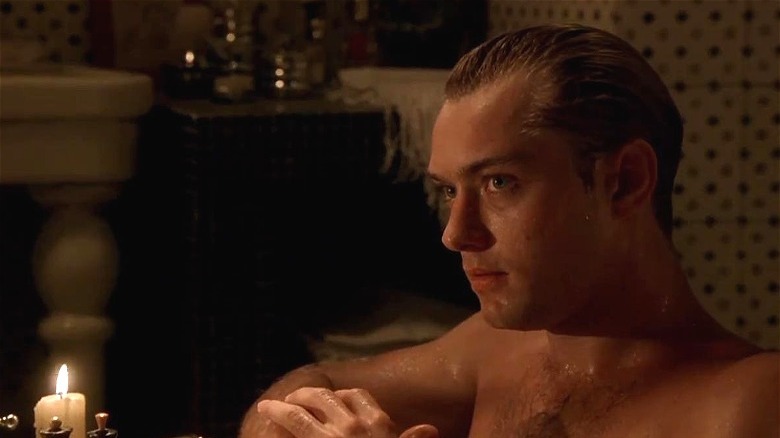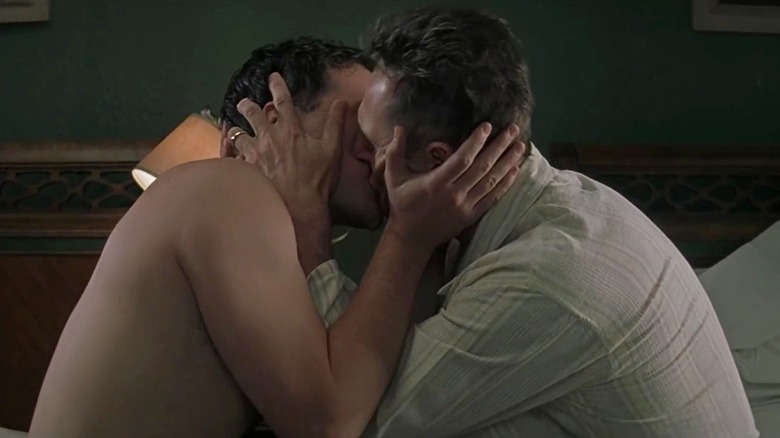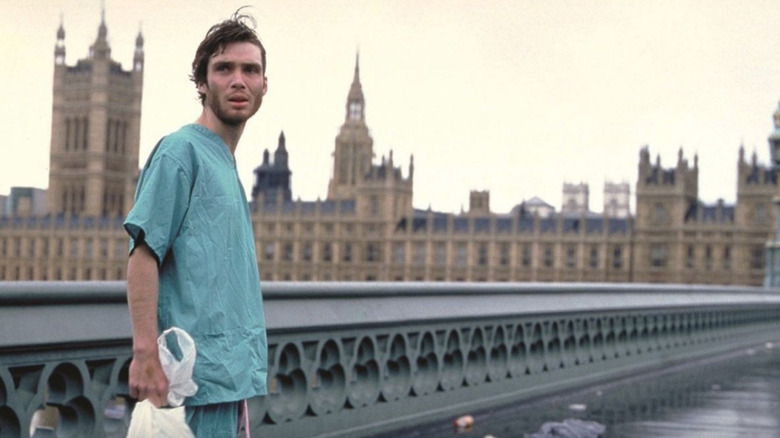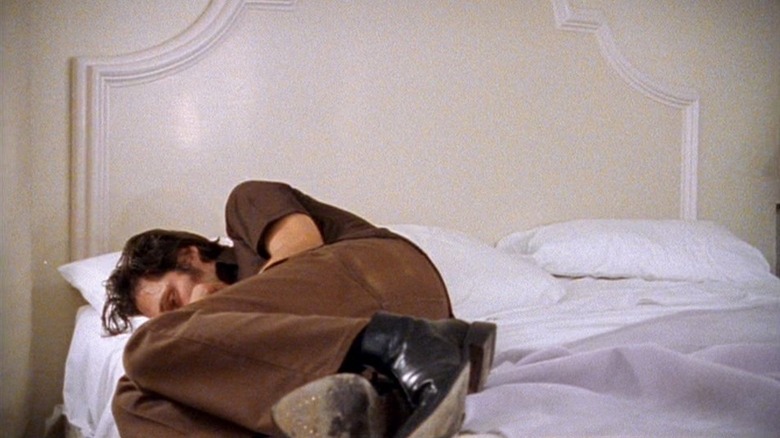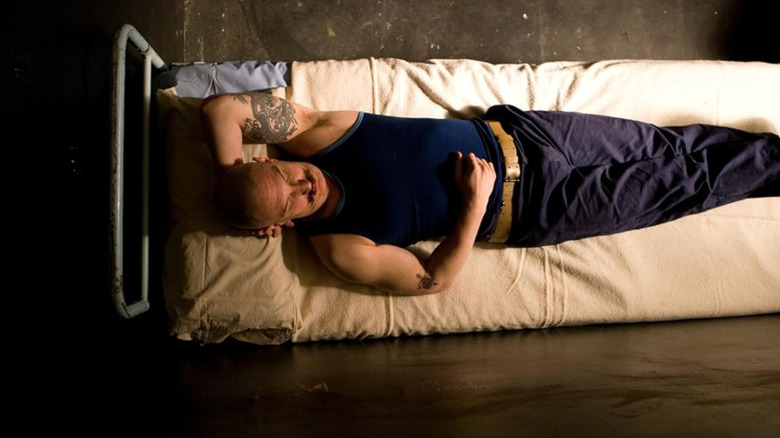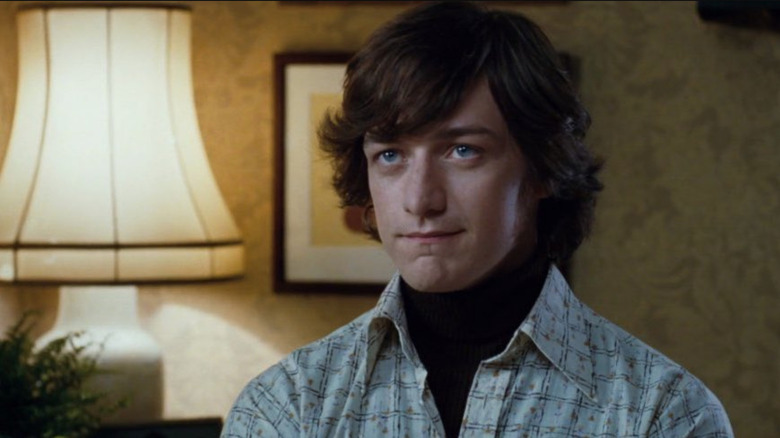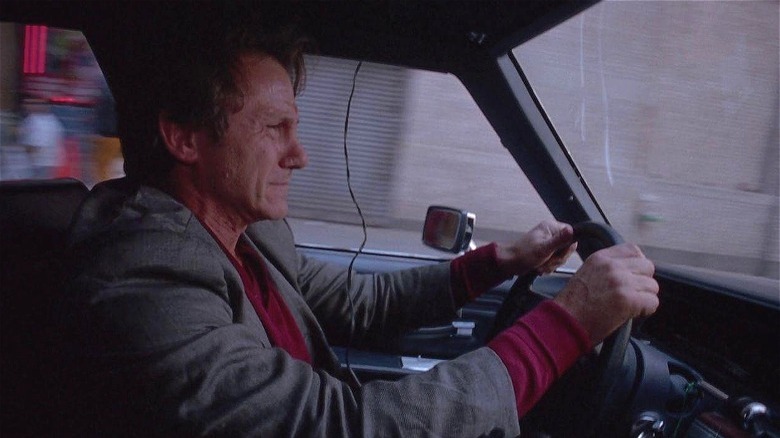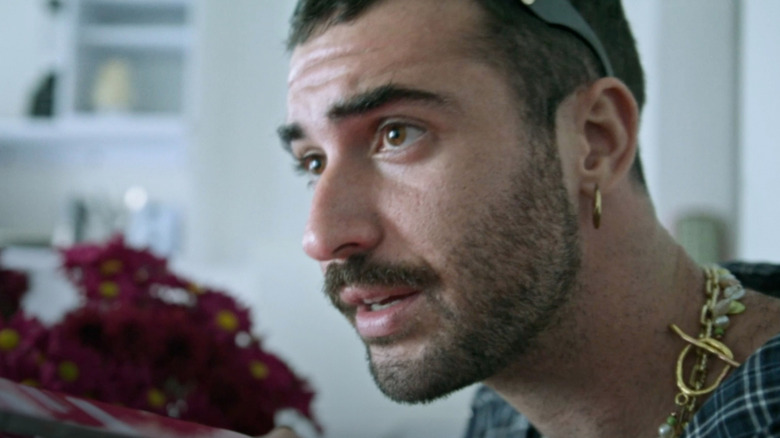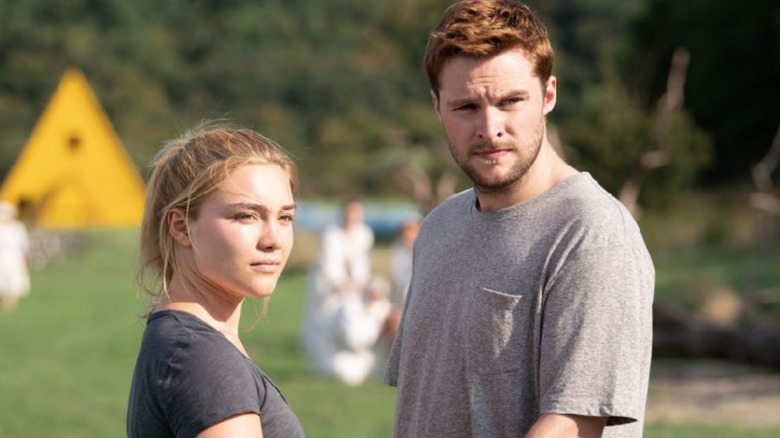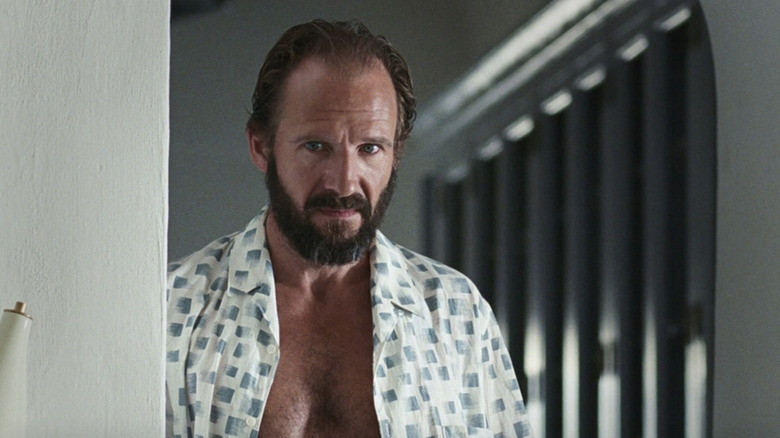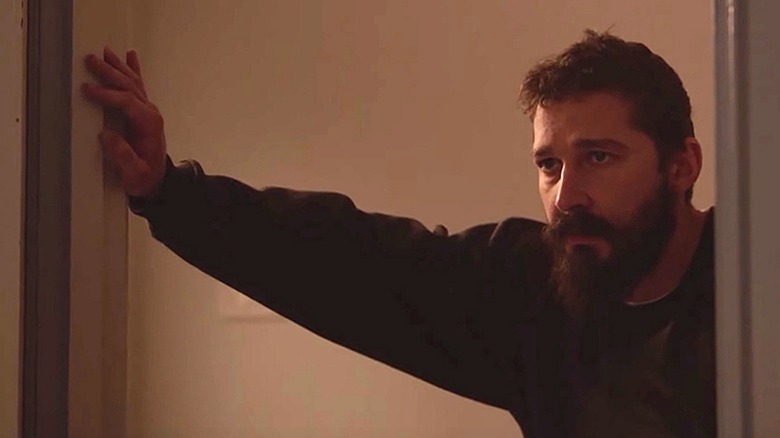Male Nude Scenes: 18 Actors Who Went Full Frontal In Movies
The portrayal of nudity in film has long been the subject of fascination and controversy. Whether its purpose is to evoke an emotion, give insight into a character, convey certain themes, or create a sense of intimacy, even a fleeting moment of nudity becomes the focal point of a film's discourse. Yet, despite efforts to normalize on-screen nudity, the disparity between the display of bare male and female flesh remains a point of contention.
In a medium where the male gaze has long dominated the cinematic landscape, the inclusion of mainstream male full-frontal nudity within recent decades offers a much-needed counterbalance. By centering the male body in moments of vulnerability or intimacy, filmmakers challenge the pervasive objectification of women in cinema and disrupt the power dynamics that have long defined on-screen representation.
However, the depiction of male full-frontal nudity is not without its controversies. While working toward greater inclusivity and diversity in cinema, the portrayal of male nudity continues to be subject to censorship, stigma, and cultural taboos. The following actors have challenged these conventions by embracing full-frontal nudity as a form of artistic expression, baring themselves both physically and emotionally for all to see.
Barry Keoghan in Saltburn
In the revealing ending of "Saltburn," the obsessive and manipulative Oliver (Barry Keoghan) celebrates his victory of taking over the Catton family fortune and their Saltburn estate by triumphantly dancing through the mansion fully nude to Sophie Ellis-Bextor's "Murder on the Dancefloor." While watching the lengthy and explicit one-take scene on its own may seem like a jarring way to cap off a movie, the series of deranged events leading up to such an ending establishes a tone that makes it the perfect culmination of Oliver's character development. "It's ownership. This is my place. It's full confidence in, 'I can do what I want in this manor. I can strip to my barest and waltz around because this is mine,'" Keoghan explained to Men's Health.
He also revealed that it wasn't so much the nudity that made him nervous but rather the dancing that took some getting used to. Guided by choreographer Polly Bennett, non-dancer Keoghan took verbal cues throughout 11 different takes until they got it right. "I didn't know I could dance like that, by the way. I was like, 'Wow. Where did them things come from?' Do ya know what I mean?" Keoghan divulged to Entertainment Weekly.
Michael Fassbender in Shame
In a film about sex addiction, it's only natural to encounter some full-frontal nudity. Such was the case for Steve McQueen's "Shame," which earned itself an NC-17 rating in the U.S. for its explicit sexual content. After their prior collaboration on the 2008 historical drama "Hunger," director McQueen and star Michael Fassbender teamed up once again for this film, which required the challenge of pushing one's own vulnerability. "Shame" wastes no time letting viewers know what they're in for, with the first of many full-frontal shots of Fassbender taking place within the first few minutes of the movie.
Despite the film's raw exploration of hard-hitting themes of sexuality and addiction, the press and public reaction around the film mainly focused on the nudity. "You know, like a guy is naked, and there's a penis on camera, and it's a big deal. Women are always parading around naked in films," Fassbender observed in an interview with GQ. The discomfort within society, particularly in the U.S., regarding the portrayal of sexuality became even more apparent when many attributed Fassbender's lack of an Oscar nomination to his full-frontal nudity. Despite missing out on the coveted Oscar nomination for best actor, Fassbender took home the Volpi Cup for best actor at the Venice Film Festival for his role in the film.
Richard Gere in American Gigolo
Despite full-frontal nudity being a taboo to this day, male actors have been tastefully (and sometimes tastelessly) stripping down for their roles as far back as 1969's "Women in Love," which is recognized as one of the earliest studio films featuring full-frontal male nudity. Among the many films now famous for their male nudity, Paul Schrader's 1980 crime drama "American Gigolo" went down in history as one of the pioneering mainstream Hollywood productions to feature frontal male nudity by its lead actor.
In the film, Richard Gere plays Julian, a male escort who gets framed for murder. While the crime aspect of the film makes it thrillingly gripping at times, the display of Julian's body throughout — both robed and disrobed — makes for a sensual and vulnerable experience throughout, something that unsurprisingly brought about discomfort for viewers not yet ready to embrace this approach to masculinity and sexuality. "If I recall, [the nudity] wasn't in the script. It was just in the natural process of making the movie. I certainly felt vulnerable, but I think it's different for men than women," Gere shared with Entertainment Weekly. Ultimately, Gere's risk in putting himself out there led to his status as a leading man and Hollywood sex symbol.
Ewan McGregor in Trainspotting, Velvet Goldmine, and others
Among the many male actors who have appeared fully nude for a role, Ewan McGregor may very well be the most famous for the sheer number of times he's bared it all on screen. But if you can look beyond the admired aesthetics of his physique, it's clear that in all four films featuring an exposed McGregor, his nudity has been utilized as a necessary device integral to the story or simply as a way to normalize our natural state of being.
In "Trainspotting," McGregor's nudity serves to portray the raw, vulnerable, and gritty nature of addiction. In "The Pillow Book," it goes hand in hand with the film's exploration of sensuality and themes of eroticism, identity, and artistic expression. In "Velvet Goldmine," it plays into the film's depiction of the indulgent and sexually liberated atmosphere of the glam rock scene. And in "Young Adam," it serves to underscore the film's themes of intimacy, desire, and moral ambiguity.
"It's all about life," McGregor told The Daily Express. "We're naked at the end of the day and we're sometimes naked in the middle of the day — if we're lucky. It may seem like I'm obsessed with sex but it's actually the opposite." The actor has since distanced himself from nude scenes, as mentioned in the same Daily Express interview, stating it has to do with him getting older and the actresses staying younger.
Kevin Bacon in Wild Things
The twist-filled erotic thriller "Wild Things" is the type of sleazy, campy film that forces you to suspend your disbelief in more ways than one. Not only do you have to believe an outcast high school student is capable of orchestrating an intricate scheme involving blackmail, manipulation, and even murder — including her own — but in the movie's infamous threesome scene, there's also the challenge of accepting that while Denise Richards' character is fully exposed, the only man in the mix doesn't show a single inch below the waist.
Instead, the most male full-frontal nudity you get in a movie that has no problem objectifying its female characters is a brief shower scene where Kevin Bacon's character, Ray, lets the towel slip for a little peek. "I honestly really didn't think about it. I said, 'If that's the shot, that's the shot that works, it's [okay].' I just didn't think it was going to be such a big deal," Bacon admitted to HuffPost.
In another instance of the film's skewed portrayal of nudity, the original screenplay featured another element of the shower scene that hinted at a homosexual relationship involving Ray and Sam (Matt Dillon) that mirrored the manipulative dynamics seen between the female characters. However, Bacon disclosed to Total Film that this scene was removed from the script before filming due to objections from the financiers, who deemed it too controversial. "They felt it went too far. They felt it wasn't right," he stated, highlighting the irony of the situation.
Jason Segel in Forgetting Sarah Marshall
In contrast to the more serious or sexualized depictions of male full-frontal nudity, the 2008 romantic comedy "Forgetting Sarah Marshall" played up the exposure for laughs. In the film's opening scene, Peter (Jason Segel) is unexpectedly dumped by his TV star girlfriend Sarah (Kristen Bell) post-shower. In the shock of the moment, Peter drops his towel and exposes himself to Sarah and the audience. "There was a creative idea behind it, it wasn't just for shock value. I wanted it to be the most humiliating breakup of all time," Segel explained to Vulture.
Segel, who wrote the scene himself, worked with director Nicholas Stoller to get it just right, which required multiple takes to test how much to show and for how long. That left Segel naked on set for lengthy periods of time. "I had no idea what the audience would put up with," Stoller shared with Entertainment Weekly. "We did test screenings where there was more of it and people just didn't want it. We discovered that less is more when you're shooting wiener." In the broader context of male nudity in cinema, this instance of full-frontal exposure serves as a refreshing palate cleanser.
Jude Law in The Talented Mr. Ripley and Dom Hemingway
If you're in the market for a Jude Law double feature, consider watching both the 1999 psychological thriller "The Talented Mr. Ripley" and the 2014 crime dramedy "Dom Hemingway," simply to witness the evolution of Law's increasing comfort with full-frontal nudity throughout his career.
Playing a wealthy and charming son of a millionaire in the first film, Law bares it all in a bathtub game of chess with the obsessive interloper Tom Ripley (Matt Damon). In a scene suffused with homoerotic undertones, fully-clothed Tom makes an advance on Law's unclothed character Dickie by asking to join him in the bath. As part of his rejection, Dickie gets out of the tub and leaves. In a blink-and-you'll-miss-it moment, everything previously hidden by the chess board is put on full display as Dickie exits the tub.
"Dom Hemingway," on the other hand, is much less subtle with Law's nudity. One of the most revealing scenes is also surprisingly one of the least sexual ones: Law's character Dom walks through a garden naked while his friend Dickie (Richard E. Grant) begs him to put some clothes on. And then there's the unforgettable opening scene. "I thought the best way to go was to just start with this crazy opening scene, which is incredibly explicit and I'm naked. I strolled on the set, nothing on, and started that particular soliloquy," Law told E! News.
Aaron Taylor-Johnson in A Million Little Pieces
The film adaptation of James Fey's controversial memoir "A Million Little Pieces" stars Aaron Taylor-Johnson in his most vulnerable role yet. In the opening scene, Taylor-Johnson as James appears full-frontal in a drug-induced dance sequence that ends with him falling out of a window.
"I wanted the audience to know, very quickly, exactly who he was, without repeating imagery we've seen before," writer-director Sam Taylor-Johnson explained to Backstage. "I said, 'You're a broken human being, and your behavior has to be so raw and without any boundaries or sense of self.' ... Of course, when we shot it, it's like, 'Oh, god.'" The scene was shot on the first day of filming, making the experience all the more bracing.
Any sense of discomfort on the part of the audience is intentional. As the movie details James' experiences with addiction and rehabilitation, nudity serves to portray the harsh realities and physical degradation that often accompany substance abuse.
Peter Sarsgaard in Kinsey
In the 2004 biographical drama "Kinsey," Peter Sarsgaard plays Clyde Martin, a young assistant to the controversial sex researcher Alfred Kinsey (Liam Neeson). As the two spend more time together and delve into the complexities of human sexuality, a shared curiosity transforms into a profound emotional bond, leading them to explore a deeper, more intimate connection beyond their professional roles. Before their big love scene, Clyde emerges from the shower and leisurely dries off in front of Kinsey. "It didn't feel like anything," Sarsgaard told TV Guide. "It had a purpose. It's not nudity for you guys, it's nudity for him."
The vulnerability displayed through nudity underscores the themes of openness and exploration present throughout the film, as Kinsey and his colleagues strive to challenge societal taboos and shed light on the complexities of human sexual behavior. Notably, "Kinsey" was the first film allowed to portray uncensored human genitalia in Japan, a country known for its rigid censorship regulations concerning such imagery.
Cillian Murphy in 28 Days Later
For everyone who was disappointed by the imbalance in nudity between Oppenheimer (Cillian Murphy) and his mistress Jean (Florence Pugh) in the infamous "Oppenheimer" love scene that caused real-life relationship riffs and an embarrassing moment with parents (as seen by the internet's response), then it's time to revisit the movie that put Murphy on the map back in 2002.
In "28 Days Later," a post-apocalyptic horror film widely credited with revitalizing the zombie genre, Murphy's character Jim is shown naked after waking up in the hospital bed, underscoring his vulnerability and disorientation in the wake of the catastrophic events that have occurred. He is literally and metaphorically stripped bare, forced to confront the chaos and violence surrounding him without any semblance of protection or security.
Murphy putting it all out there so early in his career proved he was willing to go all the way for his roles whenever necessary. In that case, we'll respect Murphy's decision to not perform another scene of full-frontal nudity for his character in "Oppenheimer."
Vincent Gallo in The Brown Bunny
There aren't many films as polarizing as Vincent Gallo's "The Brown Bunny," both for its experimental approach and its infamous sex scene that sparked widespread backlash. The scene in question graphically depicts Chloë Sevigny's character Daisy performing unsimulated fellatio on Gallo's character Bud. While this scene can and has been deemed as purely pornographic with no substance, Gallo has come to the film's defense, claiming the complete opposite and citing anti-pornography as one of the film's central themes.
"I chose to use imagery common in pornography but placed these images in the emotional context which included intense guilt, anger, regret, anguish, and confusion," wrote Gallo in an essay for Another Man. "In this context, it is difficult for the images to enhance sexual pleasure or sexual fantasy. Instead, the graphic images work better to enhance the discomfort of intimacy."
One of the film's most vocal critics was Roger Ebert, who famously left the Cannes Film Festival screening and dubbed it "the worst movie in the history of Cannes." In response to Ebert's criticism, Gallo referred to him as a "fat pig with the physique of a slave trader." Despite their initial feud, Ebert later gave a positive review to a revised version of the film, leading to a reconciliation between the two. However, Gallo reopened old wounds by speaking out against Ebert in his essay, seemingly breaking the truce that had previously been established.
Tom Hardy in Bronson
In the 2008 biographical prison film "Bronson," loosely based on the life of the British criminal Charles Bronson, Tom Hardy had only five weeks to prepare physically and mentally for the role. "It was a race against the clock: We didn't have any time to waste, so I started eating and my arse very quickly got very fat," Hardy said in an interview with Ask Men. In addition to getting the right physique, Hardy also had to prepare for the full-frontal nudity required — an aspect of the film that turned away director Nicolas Winding Refn's first two choices, Jason Statham and Guy Pearce.
"Tom is a fearless actor. And he's the kind of actor that if he trusts you, he'll give you his heart and you can run with that." Refn told IndieWire. "And he's willing to take off his clothes and put himself in black shoe polish. That takes a lot to do that and he did, because he's a very, very unique talent."
While there are multiple instances of Hardy appearing nude in the film, perhaps the most recognized scene comes at the end of the film when his character Bronson holds the prison art teacher hostage. In the scene, Bronson strips down naked and paints his whole body black. Hardy's portrayal is unflinchingly physical, and the nudity lays bare the character's primal essence. It underscores his complete disregard for authority and his willingness to assert dominance through any means necessary.
James McAvoy in The Last King of Scotland
In the 2006 historical drama "The Last King of Scotland," James McAvoy plays Dr. Nicholas Garrigan, a Scottish doctor who becomes entangled with Ugandan dictator Idi Amin (Forest Whitaker). During the course of the film, Garrigan undergoes a transformation from an idealistic young doctor who initially admires Amin to a horrified witness of Amin's brutal regime. Although there's a significant amount of nudity shown throughout the film, McAvoy's character appears full-frontal for just a brief moment while getting dressed. It's a passing moment, but enough to satisfy any James McAvoy fan.
While going full-frontal may be the most challenging aspect of a project for many actors, it paled in comparison for McAvoy to his torture scene, where his commitment to realism led him to pass out during filming. So those admiring the brief nudity shouldn't be surprised when there's an abrupt shift to a much darker tone in the latter half of an already heavy movie.
Harvey Keitel in Bad Lieutenant and The Piano
Starring in two very different back-to-back films, "Bad Lieutenant" and "The Piano," Harvey Keitel applied his intense and fearless approach to acting in a new, more vulnerable way by appearing fully nude in both. In each film, Keitel's nudity was not merely a gratuitous display but a powerful story device that pushed the boundaries of mainstream filmmaking. "I never do naked scenes," Keitel declared to The Washington Post. "An actor does not do nude scenes. I told a story, and it's my obligation to tell that story as honestly and as deeply as my ability will allow me."
One of Keitel's most memorable moments in "Bad Lieutenant" occurs when Keitel's character, a corrupt and morally bankrupt NYPD detective referred to as "the Lieutenant," is alone in his apartment. The Lieutenant is shown fully nude in this scene, engaging in various self-destructive behaviors such as drinking, drug use, and sexual acts. Another occurs during a moment of intense emotional distress, as the Lieutenant grapples with his inner demons and the consequences of his actions.
In "The Piano," Keitel's character, George Baines, is a rugged frontiersman who trades Ada McGrath's (Holly Hunter) prized piano in exchange for her playing lessons and, inherently, her company. The nudity in the film serves a different purpose compared to "Bad Lieutenant." It's more about vulnerability, intimacy, and power dynamics rather than degradation or corruption.
Jordan Firstman in Rotting in the Sun
If you're one of the many who found the unsimulated oral sex in "The Brown Bunny" unsettling, then brace yourself for Sebastián Silva's boldly explicit comedy "Rotting in the Sun." Having premiered at the 2023 Sundance Film Festival, the film stars Silva and social media comedian Jordan Firstman as fictionalized versions of themselves. The unlikely duo joins forces to develop a television series, but their plans take an unexpected turn when a sudden twist plunges audiences into a crime investigation.
Silva and Firstman's real-life encounter echoes their characters' meeting in the movie, set on a gay nude beach in Mexico City. In the scene, a plethora of unsimulated sexual acts unfold, with Firstman going fully nude. "The sex is so graphic that it's a double-edged sword," Silva shared with Variety. "People, especially Americans, are so scared of genitals." Silva's concerns were not unfounded, as much of the film's media coverage indeed centered on its sexual content. While this generated considerable buzz, it overshadowed the film's deeper merits. However, if viewers can move past the initial shock of nudity, they'll discover that "Rotting in the Sun" offers much more than mere titillation.
Jack Reynor in Midsommar
While it's hard to rank the many disturbing moments in Ari Aster's horror film "Midsommar," the sex scene involving Jack Reynor's character Christian may very well take the cake. In the scene, Christian appears fully naked after being drugged and partakes in a sexual encounter with Maja (Isabelle Grill) while a group of female village elders watch. It's one of the few mainstream films that visibly portrays erect genitalia.
Although Reynor admitted to Business Insider that "the film is really heavy and the themes are difficult," he knew the significance of shooting such a challenging scene that would be influential for the horror genre as a whole, which has depicted women in similar degrading situations time and time again. "It was an opportunity to be part of something that flipped that on its head, and I really wanted to engage with the experience of it by advocating for as much full-frontal nudity as possible," Reynor explained to The Hollywood Reporter. Reynor's unforgettable performance lingers in the mind, particularly due to the unsettling imagery that will forever remain seared in the memory of audiences.
Ralph Fiennes in A Bigger Splash
In Luca Guadagnino's "A Bigger Splash," you get the best of both worlds, with male and female full-frontal nudity. Taking place on the small Italian island of Pantelleria, the European attitude toward nudity is treated casually within the film. The story begins when exuberant and charismatic music producer Harry (Ralph Fiennes) disrupts the tranquility of a vacation shared by his former lover, Marianne (Tilda Swinton), and her current partner, Paul (Matthias Schoenaerts). The fact that Harry is almost always on full display with no concern for who's watching is a reflection of the character's unapologetic and free-spirited personality, lack of inhibition, and desire to push boundaries.
While "A Bigger Splash" maintains its European arthouse essence, this isn't Fiennes' first instance of such exposure on screen. Fiennes initially debuted his wares in a minor role in Peter Greenaway's "The Baby of Macon," and subsequently, he bared all in "Sunshine" and "Red Dragon."
Shia LaBeouf in Pieces Of A Woman and Nymphomaniac
Shedding his Disney Channel and "Transformers" reputation, Shia LaBeouf dove right into more adult content by appearing fully nude in the Icelandic band Sigur Rós' music video for the song "Fjögur Píanó." Soon after, he embraced full-frontal nudity for the first time in a film, in Lars von Trier's highly controversial and provocative "Nymphomaniac." LaBeouf plays Jerôme, a confident, charismatic young man who becomes entangled in the life of Joe (Charlotte Gainsbourg), a self-diagnosed nymphomaniac. Jerôme's nudity is prominently featured in several scenes, often during intimate moments with Joe. Disturbingly, LaBeouf's audition tape was just as unconventional as the film itself, with LaBeouf admitting that he sent the director tapes of him and his then-girlfriend having sex in order to secure the role.
In 2020, LaBeouf appeared completely naked once again in the film "Pieces of a Woman." The scene occurs during a deeply intimate and emotionally charged moment between his character, Sean, and Martha (Vanessa Kirby) as they navigate the complexities of grief and loss following the tragic death of their newborn child. Netflix initially included LaBeouf in their Oscar campaign but removed him from their "For Your Consideration" website after assault allegations were made against him by former girlfriend FKA Twigs in late 2020.
If you or anyone you know needs help with addiction issues or may be the victim of domestic abuse, contact the relevant resources below:
- Visit the Substance Abuse and Mental Health Services Administration website or contact SAMHSA's National Helpline at 1-800-662-HELP (4357).
- Call the National Domestic Violence Hotline at 1−800−799−7233. You can also find more information, resources, and support at their website.
